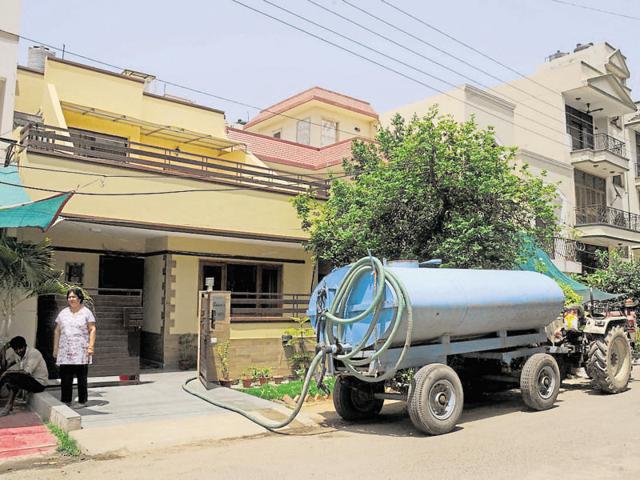Life in the dark zone: Here, each drop counts
Indiscriminate extraction of water to sustain a burgeoning city and feed its water guzzling construction industry has pushed the groundwater table in Gurgaon to an all-time low.
Indiscriminate extraction of water to sustain a burgeoning city and feed its water guzzling construction industry has pushed the groundwater table in Gurgaon to an all-time low.

In some localities, such as Patuadi, the groundwater table has plummeted by nearly 23 feet despite the central ground water board declaring the city a ‘Dark Zone’ and restricting water extraction activities such as digging of borewells.
Dark zone refers to an area where groundwater level has fallen in a block beyond a parameter. A block is first identified as critical before it is dubbed a dark zone.
The ban remains only on paper as a large part of the city, constructed by private developers, depends on groundwater for its daily needs as the supply by Huda is deficient.
Overexploitation of groundwater could result in the creation of voda-zones (shallow), making the area underneath the surface unstable. For a city like Gurgaon, which is already on the dangerous seismic zone IV, this could prove hazardous.
The groundwater level in Gurgaon has gone down by 14.16 metres between 2005 and 2014, according to experts.
Additionally, the central ground water board has said there are about 10,913 tubewells and borewells in Gurgaon district that have adversely affected the groundwater table. According to the board, till 2013, around 886 tubewells were sealed for extracting groundwater illegally. However, despite checks, the water level in the area is deteriorating at an alarming rate.
This can be substantiated by the data of groundwater cell that clearly states that, in June 2015, the groundwater level in the city was 36.26 metres.
“The city extracts three times more water than it receives in the form of rainfall every year. The topography of the region is such that Gurgaon’s surface water potential is less than promising. As the water flow is tilted towards Najafgarh drain, and subsequently to river Yamuna, it is not easy for the city to retain water,” said VS Lamba, a hydrologist.
Though the water table in the areas under the MCG has depleted by an average of four feet, according to a study conducted by Dr Gauhar Mehmood of Delhi’s Jamia Millia Islamia, in other areas the depletion is more than seven feet.
The study also concluded that groundwater extraction in the city should not be more than 85% but currently it is around 312% — much higher than expected.
“It is not possible to harvest 100% rainwater, but the city is continuously wasting water. Efforts should be taken to treat waste water,” Mehmood said.
Mehmood also said the government should form a comprehensive water management plan for the city.
Stay updated with all the Breaking News and Latest News from Mumbai. Click here for comprehensive coverage of top Cities including Bengaluru, Delhi, Hyderabad, and more across India along with Stay informed on the latest happenings in World News.
Stay updated with all the Breaking News and Latest News from Mumbai. Click here for comprehensive coverage of top Cities including Bengaluru, Delhi, Hyderabad, and more across India along with Stay informed on the latest happenings in World News.





